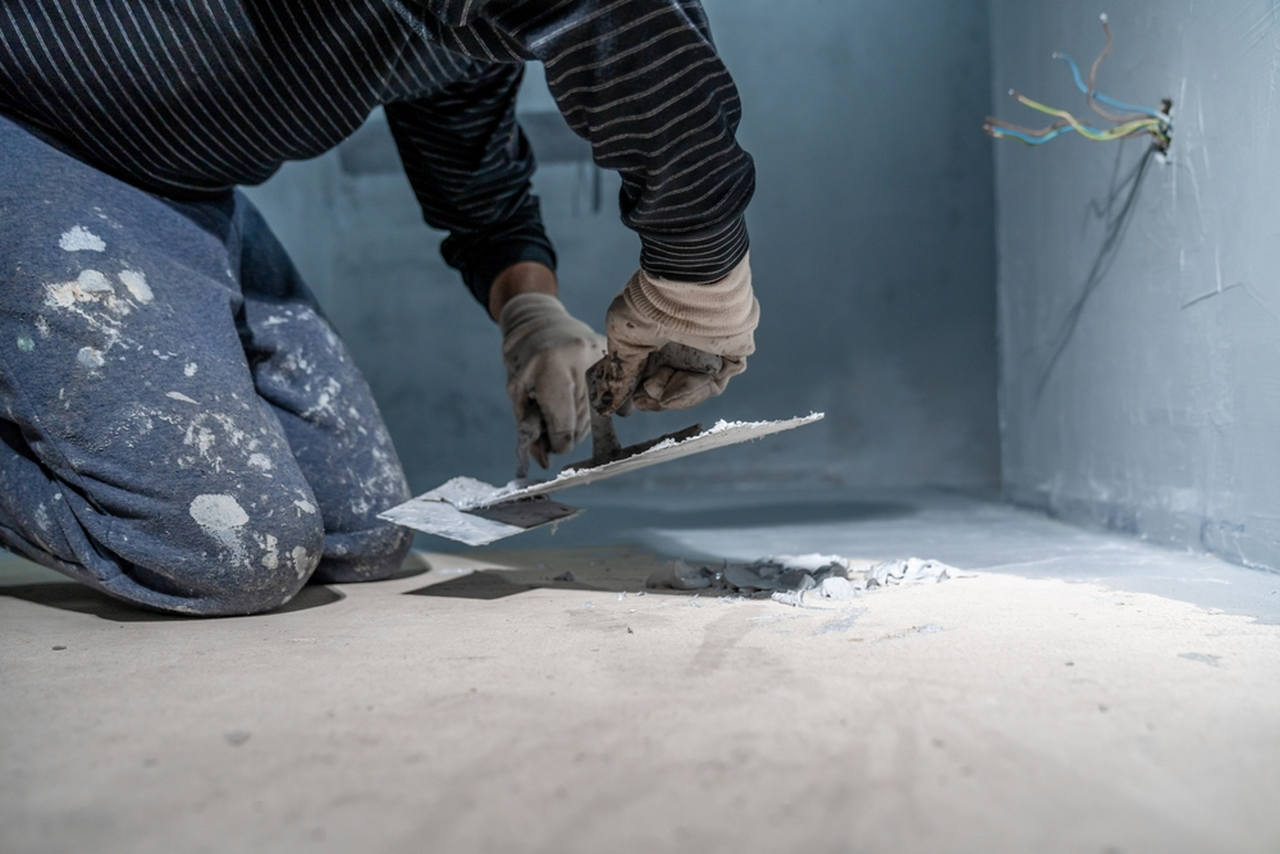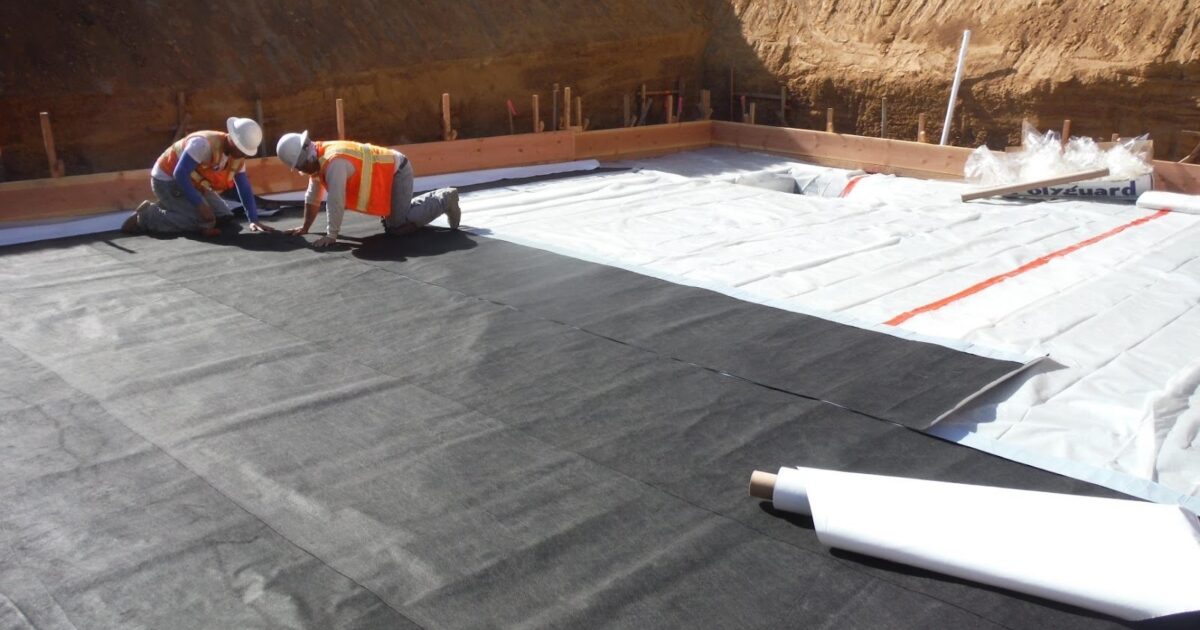Why Waterproofing Is Critical for Durable Structures: a Thorough Analysis
Waterproofing plays a necessary role in the long life of frameworks. It acts as an obstacle against moisture, which can bring about significant problems like mold and deterioration. Comprehending the various waterproofing methods and their effects is vital for homeowner. The effects of neglecting this element can be extreme. Exploring these aspects discloses not simply the requirement of waterproofing, but additionally its wider influence on residential or commercial property worth and security.
Recognizing Waterproofing: Definition and Value
Waterproofing works as a vital obstacle versus wetness intrusion, protecting frameworks from possible damages. It encompasses various techniques and products made to avoid water penetration into buildings, making sure long life and capability. The importance of waterproofing can not be overstated, as it safeguards against a variety of issues, consisting of mold development, damage of products, and architectural weakening.Effective waterproofing remedies can consist of membrane layers, coverings, and sealants, each tailored to particular atmospheres and structural layouts. By creating a protective layer, these solutions help maintain a completely dry inside, which is critical for the wellness of owners and the conservation of home value.Moreover, buying waterproofing at the building phase is considerably more cost-effective than addressing water-related issues after they develop. Understanding the concepts of waterproofing is important for architects, contractors, and home owners intending for resilient, resilient frameworks that endure the examination of time and ecological challenges.

The Influence of Water Damages on Architectural Stability
Water damages postures substantial dangers to architectural stability, primarily via the growth of mold and mildew and mold. These organisms not only compromise indoor air quality however additionally lead to material deterioration gradually. Furthermore, extended exposure to wetness can deteriorate architectural elements, enhancing the possibility of collapse or failure.
Mold and Mildew Growth
Moisture breach postures a significant risk to the structural integrity of structures, bring about the expansion of mold and mildew. These fungis grow in wet settings, commonly taking origin in covert areas such as wall surface dental caries, under flooring, and in ceilings. Their growth not just produces unpleasant spots and undesirable smells but likewise adds to a decrease in indoor air high quality, posturing wellness threats to owners. Mold and mildew can endanger materials like timber and drywall, leading to additional moisture retention and developing a cycle of damages. Early discovery and remediation are necessary to stop comprehensive growth, underscoring the need of efficient waterproofing measures. Resolving moisture concerns immediately can shield both the health and wellness of inhabitants and the long life of the structure.
Architectural Weakening Threats
Uncontrolled dampness intrusion can bring about severe architectural weakening, jeopardizing the stability of structures. Water damage often impacts fundamental elements, such as light beams, columns, and wall surfaces, resulting in jeopardized load-bearing ability. Prolonged exposure to wetness can create products like timber to rot and steel to corrode, compromising their architectural homes. This damage may result in fractures, bowing, or also catastrophic failures if left unaddressed. Landscape drainage Omaha. Additionally, water infiltration can undermine the soil beneath structures, triggering settling or shifting that additional worsens structural dangers. As a result, implementing reliable waterproofing services is important in protecting a structure's structural integrity, avoiding expensive repair services, and guaranteeing safety for owners. Proper maintenance and proactive actions are essential in minimizing these considerable dangers associated with water damage
Kinds of Waterproofing Techniques and Materials
Waterproofing methods and products play an essential duty in securing frameworks from water damage. Key techniques consist of membrane layer waterproofing, which supplies a physical barrier; fluid waterproofing remedies that develop a seamless layer; and cementitious waterproofing choices known for their durability and ease of application. Comprehending these various techniques is crucial for picking the most appropriate approach for particular building needs.
Membrane Waterproofing Methods
Membrane waterproofing methods are important for shielding structures from the destructive impacts of water seepage. These techniques entail the application of water resistant membranes that create a barrier against dampness. The two primary sorts of membrane systems are sheet membranes and liquid-applied membranes. Sheet membrane layers, usually made from products such as rubberized asphalt or thermoplastic, are built and can be turned out and stuck to surfaces. On the other hand, liquid-applied membrane layers are used as a liquid and remedy to form a seamless layer. Both kinds offer flexibility and resilience, dealing with numerous applications, including roofing systems, basements, and structures. Proper setup and upkeep of these membrane layers assure long-term security, improving the life-span and integrity of the structures they protect.
Fluid Waterproofing Solutions
Fluid waterproofing solutions stand for a functional choice to typical membrane layer systems. These options normally include the application of liquid coverings that treat to create a seamless, resilient obstacle versus water infiltration. Numerous kinds of liquid waterproofing products are readily available, consisting of polyurethane, bitumen, and acrylic-based formulas. Each type uses one-of-a-kind residential or commercial properties, such as adaptability, bond, and UV resistance, making them suitable for diverse applications. The application process often includes spraying or rolling the fluid onto surface areas, enabling protection of intricate forms and information, which decreases possible powerlessness. Fluid waterproofing services are particularly helpful for areas with activity, such as joints and cracks, as they can suit structural changes without jeopardizing integrity, making certain lasting defense for structures.
Cementitious Waterproofing Options
Many cementitious waterproofing options are offered, supplying effective options for various building needs. These systems normally contain a blend of cement, sand, and ingredients, making them suitable for both interior and outside applications. Amongst the prominent choices are crystalline waterproofing products, which react with dampness to form a water resistant obstacle within the concrete matrix. In addition, flexible cementitious finishings give boosted flexibility, suiting minor architectural movements without jeopardizing the waterproofing stability. It is likewise usual to make use of cementitious sealants for joints and splits, making certain complete defense against water infiltration. Generally, cementitious waterproofing alternatives are valued for their resilience, convenience of application, and compatibility with different substrates, making them a favored selection in modern-day construction techniques.
Long-Term Price Financial Savings Through Effective Waterproofing
Investing in effective waterproofing solutions can substantially lower long-term expenses for building proprietors and programmers. By stopping water breach, these solutions minimize damages to architectural components, reducing the need for expensive repair work and maintenance gradually. Waterproofing additionally shields indoor coatings and home furnishings, decreasing replacement costs and enhancing the overall lifespan of the property.Moreover, reliable waterproofing can lead to power cost savings by enhancing insulation and reducing humidity-related concerns. This leads to lower heating & cooling expenses, adding to an extra sustainable monetary model for building management.Additionally, the execution of waterproofing procedures can enhance property worth by guaranteeing a completely dry, risk-free, and durable atmosphere. While the first financial investment in waterproofing might seem considerable, the lasting monetary benefits much surpass the ahead of time prices, making it a prudent decision for any individual entailed in building and construction or building management.

The Role of Waterproofing in Building Regulations and Rules
Waterproofing plays a substantial role in structure codes and laws, reflecting its importance in modern construction practices. These codes are created to assure safety, toughness, and sustainability in buildings, stressing the requirement for efficient waterproofing procedures. Different national and local building regulations lay out certain requirements for waterproofing materials and strategies, specifically in areas prone to water breach, such as cellars and foundations.Compliance with these policies not only shields frameworks from moisture-related damage however also safeguards public wellness by stopping mold and mildew growth and architectural instability. Inspectors usually evaluate waterproofing components during the building process to assure adherence to established criteria. As environment change raises the frequency of severe weather condition occasions, the function of waterproofing in structure codes is expected to evolve, possibly causing more stringent regulations. Generally, the integration web link of waterproofing in governing frameworks highlights its crucial duty in achieving resilient, resilient frameworks.
Situation Studies: Effective Waterproofing Solutions
Effective waterproofing remedies have been implemented throughout numerous tasks, showcasing cutting-edge strategies that boost structural stability and longevity. One noteworthy instance is the renovation of the historic Smith Tower in Seattle, where innovative membrane layer systems were utilized to safeguard the structure from water breach. This method not just maintained the structure's aesthetic however additionally expanded its lifespan.In one more instance, a large commercial building in Miami used crystalline waterproofing modern technology, which reacts with moisture to develop an obstacle versus water. This remedy proved reliable against the city's high moisture and heavy rainfall.Additionally, a bridge in San Francisco underwent a substantial waterproofing therapy utilizing epoxy finishes, which considerably minimized maintenance costs and improved longevity. These study illustrate the effectiveness of tailored waterproofing techniques in diverse environments, emphasizing the relevance of picking proper techniques to address particular obstacles and guarantee look at this web-site the longevity of structures.
Ideal Practices for Implementing Waterproofing Strategies
Carrying out efficient waterproofing techniques calls for careful preparation and adherence to ideal methods - Yard drainage Omaha. Initially, it is crucial to conduct a comprehensive website analysis to identify possible locations of water ingress. This assessment notifies the option of suitable products and strategies customized to details environmental conditions. Making use of premium, sturdy waterproofing membranes can significantly boost protection against moisture.Additionally, appropriate installment methods are important; guaranteeing that surface areas are tidy and without contaminants promotes excellent adhesion. Regular maintenance checks must be set up to recognize any indicators of wear or damages, permitting prompt repairs.Moreover, incorporating water drainage systems can properly handle water overflow, preventing accumulation around structures. Informing all workers associated with building and construction concerning waterproofing requirements additional warranties consistency and adherence to finest techniques. Ultimately, an aggressive technique to waterproofing can considerably expand the life expectancy of frameworks and minimize long-lasting maintenance costs
Frequently Asked Questions
Exactly How Does Waterproofing Affect Power Performance in Structures?
Waterproofing substantially boosts power effectiveness in buildings by preventing dampness breach. This minimizes the requirement for heating & cooling, keeps regular interior temperatures, and inevitably reduces energy consumption, adding to lasting sustainability and price savings.
Can Waterproofing Be Applied to Existing Structures?
Waterproofing can indeed be related to existing structures. Various methods, such as membranes, coverings, and sealants, enable property proprietors to boost protection against moisture, thereby lengthening the framework's stability and minimizing potential damage in time.
What Are the Signs of Inadequate Waterproofing?
Signs of poor waterproofing consist of water spots on wall surfaces, mold and mildew growth, peeling paint, stuffy smells, and moisture in basements - Water Solutions Omaha. These indications recommend potential architectural damages and the need for prompt interest to avoid further degeneration
Just How Typically Should Waterproofing Be Evaluated or Maintained?
Waterproofing must be evaluated a minimum of every year, specifically in regions with heavy rains or rising and falling temperatures. Regular upkeep warranties early detection of concerns, advertising architectural honesty and prolonging the life expectancy of the structure.
Exist Eco-Friendly Waterproofing Options Available?
Eco-friendly waterproofing options are progressively readily available, utilizing sustainable materials such as bio-based polymers and natural sealants. These options not just shield structures however likewise click here for more lessen ecological effect, appealing to eco conscious home builders and homeowner.